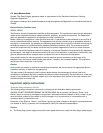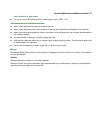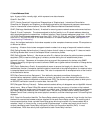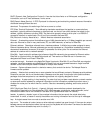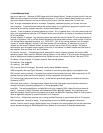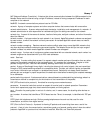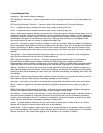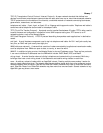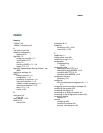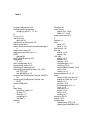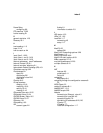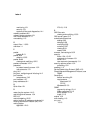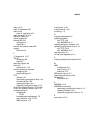6 User’s Reference Guide
remapping: See network number remapping.
RFC (Request for Comment): A series of documents used to exchange information and standards about the
Internet.
RIP (Routing Information Protocol): A protocol used for the transmission of IP routing information.
RJ-11: A telephone-industry standard connector type, usually containing four pins.
RJ-45: A telephone-industry standard connector type, usually containing eight pins.
router: A device that supports network communications. A router can connect identical network types, such as
LocalTalk-to-LocalTalk, or dissimilar network types, such as LocalTalk-to-Ethernet. However—unless a gateway is
available—a common protocol, such as TCP/IP, must be used over both networks. Routers may be equipped to
provide WAN line support to the LAN devices they serve. They may also provide various management and
monitoring functions as well as a variety of configuration capabilities.
router port: A physical or logical connection between a router and a network. Where a network only allows the
use of one protocol, each physical connection corresponds to one logical router port. An example is the Netopia
Router’s LocalTalk port. Where a network allows the use of several protocols, each physical connection may
correspond to several logical router ports—one for each protocol used. Each router port has its own network
address.
routing table: A list of networks maintained by each router on an internet. Information in the routing table
helps the router determine the next router to forward packets to.
SDLC (Synchronous Data Link Control): A link-level communications protocol used in an International
Business Machines (IBM) Systems Network Architecture (SNA) network that manages synchronous,
code-transparent, serial information transfer over a link connection. SDLC is a subset of the more generic HDLC
(High-Level Data Link Control) protocol developed by the International Organization for Standardization (ISO).
seeding: A method for ensuring that two or more routers agree about which physical networks correspond to
which network numbers and zone names. There are three options: non-seeding, soft seeding, and hard seeding.
Seeding can often be set separately for each router port. See also hard seeding, non-seeding, seed router, and
soft seeding.
seed router: A router that provides network number and zone information to any router that starts up on the
same network. See also hard seeding, non-seeding, seeding, and soft seeding.
serial port: A connector on the back of the workstation through which data flows to and from a serial device.
server: A device or system that has been specifically configured to provide a service, usually to a group of
clients.
SNMP (Simple Network Management Protocol): A protocol used for communication between management
consoles and network devices. The Netopia Router can be managed through SNMP.
soft seeding: A router setting. In soft seeding, if a router that has just been reset detects a network number or
zone name conflict between its configured information for a particular port and the information provided by
another router connected to that port, it updates its configuration using the information provided by the other
router. See also hard seeding, non-seeding, seeding, and seed router.
subnet: A network address created by using a subnet mask to specify that a number of bits in an internet
address will be used as a subnet number rather than a host address.
subnet mask: A 32-bit number to specify which part of an internet address is the network number and which
part is the host address. When written in binary notation, each bit written as 1 corresponds to 1 bit of network
address information. One subnet mask applies to all IP devices on an individual IP network.



